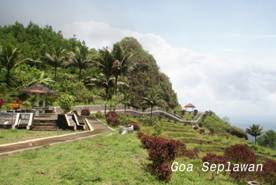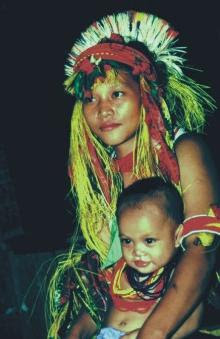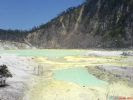Seplawan Cave, Purworejo
 Goa Seplawan located in the Village Donorejo, District Kaligesing with distance, 20 km to the East from the center of Purworejo with a height of 700 m dpl so that the air is very cool. Goa has a special characteristic ornaments found in the cave, among others staklatit, staklamit, flowstone, helekit, soda straw, gower dam walls and wall-like framework berornamen fish. The length of cave Seplawan + 700 m with branches cave around 150-300 m and 15 m. berdiameter Goa is very natural that this became even more stunning with the famous golden statue diketemukannya Dewa Dewi Syiwa and seberat 1.5 kg on 28 August 1979 the statue is now kept in the National Museum Jakarta.
Goa Seplawan located in the Village Donorejo, District Kaligesing with distance, 20 km to the East from the center of Purworejo with a height of 700 m dpl so that the air is very cool. Goa has a special characteristic ornaments found in the cave, among others staklatit, staklamit, flowstone, helekit, soda straw, gower dam walls and wall-like framework berornamen fish. The length of cave Seplawan + 700 m with branches cave around 150-300 m and 15 m. berdiameter Goa is very natural that this became even more stunning with the famous golden statue diketemukannya Dewa Dewi Syiwa and seberat 1.5 kg on 28 August 1979 the statue is now kept in the National Museum Jakarta.Other places that also related to the history of Goa is Purworejo District Seplawan, which is located in the area of the Village Donorejo, District Kaligesing. Goa is a special-called because in a Prasasti Wood Arahiwang. In the inscription is clearly mentioned that one of the places that must be maintained because the purity is Seplawan Goa.
And presumably this is indeed correct. Because when you first found on 28 August 1979, in a cave alley found a pair of god goddess statue made of pure gold. The existence of a pair of statues of the gods goddess who is no other god Syiwa and Dewi Parwati (seberat 1.5 kg), and indicate if Goa Seplawan previously used as a place of worship.
The statue was then taken to Jakarta and stored in the National Museum Jakarta. Instead the government made a replica of the statue is right in front of the mouth of the cave. The aim is to remind the visitor that this cave is basically the holy places by people who disakralkan at the time of first. In addition to sacred, this cave also has a beauty that is very unusual. Stalaktit carpet and stalagnit lane in each cave, creating the impression for visitors to the cave. Not only that gemericik water from the rocks it will cave to anyone able to calm the heart to enter.
This cave has a length of 700 meters, with branches around the cave 150 - 300 meters and 15 meters berdiameter. So to go into the cave, visitors must tread through which enough melalahkan decreased. Feeling tired, which will be lost so soon start to enter the cave mouth. For the mouth of the cave is just beautiful stone carvings in the cave is clearly visible.
So no wonder that visitors like berlama-long stay in the cave. Sometimes there are even people who deliberately go and stay for a few days in the cave to do the ritual. And this can be hioswa and the aroma of perfume that menyeruak from one of the rooms in the cave. Presumably because the room was often used to perform the ritual.
Rituals in the cave is actually a series of rituals performed in the usual Gondoarum the temple is located not far from the cave Seplawan. Temple Gondoarum own at this time nearly shapeless again. The only remaining former-former basic foundation temple, a cursory look like ordinary stones into. But that is to distinguish, outline some of the carvings on some of the stone when dirangkai can contact each other.
"This temple was suspected to be older than the temple at Borobudur. Gondoarum and called for commemorative yoninya appointed time, out fragrant fragrance. So until now there are people who do not dare to do in this place is ugly. "
Yoni location phallus itself right next to the temple, and now has created a simple cungkup to protect it. In fact the museum intends to secure the objects. But the "watchman" it does not. So until now the stone is a symbol of unification is still life left in the first place.


Comments
Post a Comment